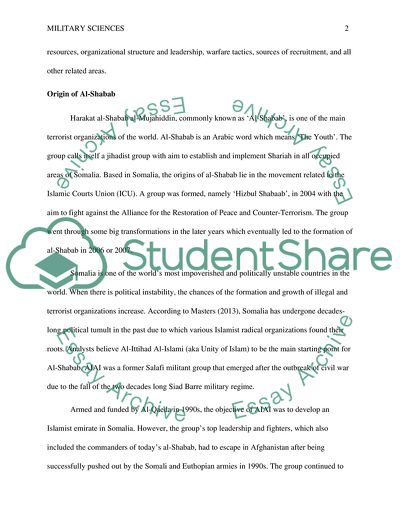Cite this document
(AL-Shabab Terrorist Group Analysis Research Paper Example | Topics and Well Written Essays - 3000 words, n.d.)
AL-Shabab Terrorist Group Analysis Research Paper Example | Topics and Well Written Essays - 3000 words. https://studentshare.org/military/1834521-al-shabab-terrorist-group
AL-Shabab Terrorist Group Analysis Research Paper Example | Topics and Well Written Essays - 3000 words. https://studentshare.org/military/1834521-al-shabab-terrorist-group
(AL-Shabab Terrorist Group Analysis Research Paper Example | Topics and Well Written Essays - 3000 Words)
AL-Shabab Terrorist Group Analysis Research Paper Example | Topics and Well Written Essays - 3000 Words. https://studentshare.org/military/1834521-al-shabab-terrorist-group.
AL-Shabab Terrorist Group Analysis Research Paper Example | Topics and Well Written Essays - 3000 Words. https://studentshare.org/military/1834521-al-shabab-terrorist-group.
“AL-Shabab Terrorist Group Analysis Research Paper Example | Topics and Well Written Essays - 3000 Words”. https://studentshare.org/military/1834521-al-shabab-terrorist-group.


